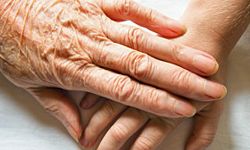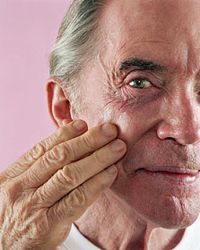Your skin is your largest organ and a vital barrier that protects you from your environment. As your primary defense shield, skin absorbs a tremendous amount of abuse. It guards your innards from the sun's harmful rays, extreme hot and cold temperatures, and water -- not to mention a multitude of aggressive bacteria and viruses that might otherwise make you very sick.
On top of all that abuse, your skin must repair itself when it endures harm. It's continually healing little scratches and scrapes and bruises. Ironically, the size and familiarity of your skin makes it easy to take for granted. And many people do.
Advertisement
So maybe it's no surprise that although everyone starts life with taut, smooth baby skin, all humans wind up looking a bit like raisins. Of course, your behaviors dictate only part of skin deterioration. No matter how careful you might be, the effects of aging always take an inevitable toll, manifested in sags, wrinkles, discoloration and other blemishes that many people wish would never appear.
Some skin experts divide skin aging into two categories: intrinsic and extrinsic. Intrinsic aging refers to the effects your genetic makeup has on your aging process. Much as some people develop gray hair in their 20s, others are prone to earlier evidence of skin aging.
Extrinsic aging refers to external environmental factors, such as sun exposure, smoking and even habitual muscle movements (most noticeable in the face), that play a major role in the wear and tear on your skin. These are the conditions that, in some cases, you can actually control through your own behavior.
Of course, no amount of care can prevent the inexorable toll that aging takes on your fleshy exterior. As your skin slowly weakens, some predictable physical effects become more and more obvious. Keep reading to see five primary ways your skin changes as you age, listed in no particular order.






